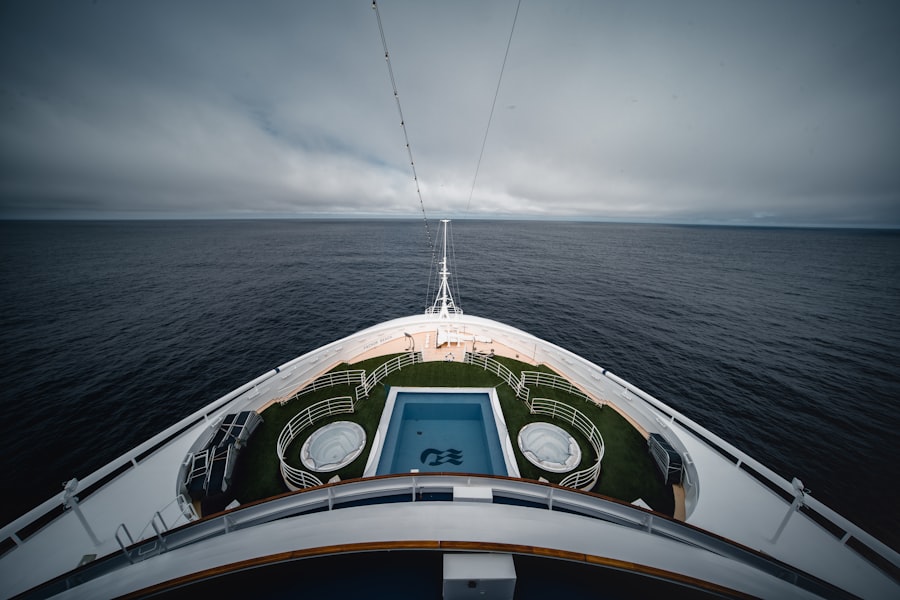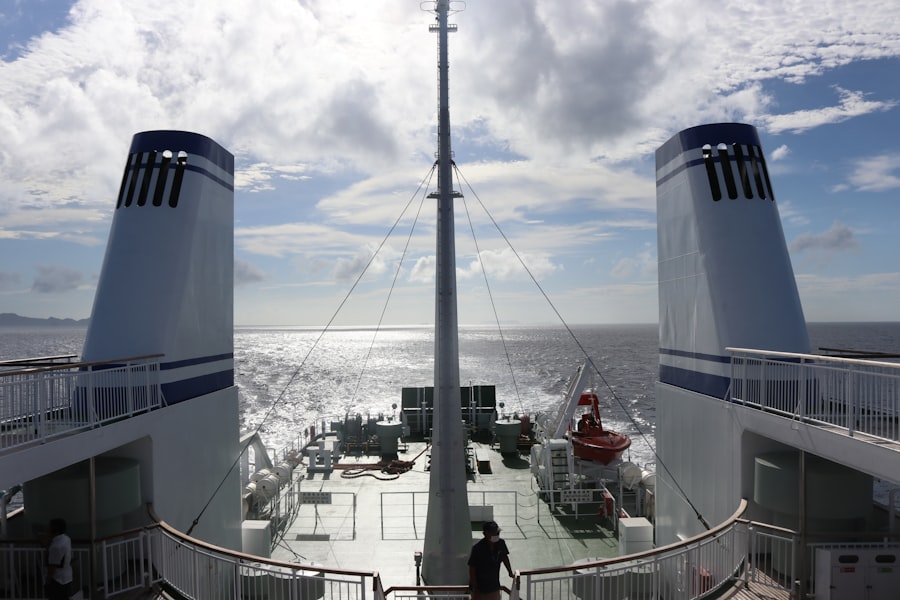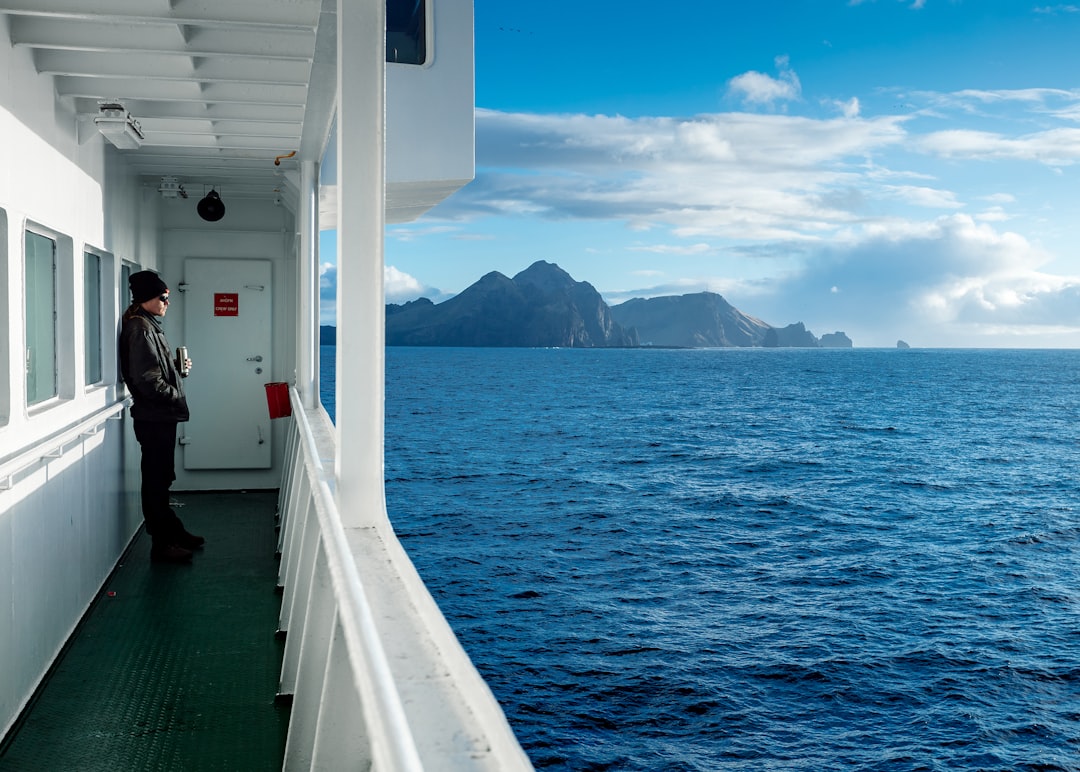The Drake Passage, often referred to as the “Sailor’s Grave,” is a body of water that separates South America from Antarctica. This notorious stretch of ocean is known for its unpredictable weather and turbulent seas, making it one of the most challenging routes for cruise ships. The passage is approximately 600 miles wide and is characterized by strong currents and high winds, which can create rough conditions that test the mettle of even the most seasoned mariners.
For many cruise enthusiasts, the allure of crossing the Drake Passage lies not only in the adventure but also in the breathtaking landscapes and unique wildlife that await on the other side. Despite its reputation, the Drake Passage is a vital route for those seeking to explore the wonders of Antarctica. Many cruise lines offer itineraries that include this crossing, providing travelers with an opportunity to experience the thrill of navigating these tumultuous waters.
While some may find the journey daunting, others view it as an essential part of their Antarctic adventure, a rite of passage that adds to the overall experience. The passage serves as a gateway to one of the most remote and pristine environments on Earth, making it a coveted destination for adventurers and nature lovers alike.
Key Takeaways
- The Drake Passage is a challenging route for cruises due to its unpredictable weather and rough seas.
- The history and geography of the Drake Passage make it a unique and fascinating area to cross for adventurous travelers.
- The best time to cross the Drake Passage is during the austral summer, from November to March, when the weather is relatively milder.
- Sailing through the Drake Passage offers a thrilling and unforgettable experience, with opportunities to witness stunning natural landscapes and wildlife.
- Safety measures and precautions are essential for cruising the Drake Passage, including having experienced crew and captains on board.
The History and Geography of the Drake Passage
The history of the Drake Passage is steeped in exploration and discovery.
Its strategic location has made it a critical route for explorers, scientists, and traders seeking to connect the Atlantic and Pacific Oceans.
The passage’s geographical significance cannot be overstated; it serves as a natural barrier between two vast oceans and plays a crucial role in global ocean currents. Geographically, the Drake Passage is defined by its unique topography, which includes deep oceanic trenches and underwater ridges. The South Shetland Islands and the Antarctic Peninsula lie to the south, while Cape Horn marks its northern boundary.
The convergence of cold Antarctic waters with warmer currents from the north creates a dynamic marine environment that is both challenging and fascinating. This interplay of currents contributes to the unpredictable weather patterns that characterize the passage, making it a subject of interest for meteorologists and oceanographers alike.
The Best Time to Cross the Drake Passage

Timing is everything when it comes to crossing the Drake Passage. The best time to embark on this journey is during the Antarctic summer months, which typically span from late November to early March. During this period, weather conditions are generally more favorable, with calmer seas and milder temperatures.
Travelers who choose to cross during these months are more likely to enjoy a smoother sailing experience, allowing them to fully appreciate the stunning vistas and wildlife encounters that await them. However, even during the summer months, conditions can change rapidly in the Drake Passage. It is not uncommon for cruise ships to encounter rough seas or sudden storms, so flexibility is key for those planning their voyages.
Travelers should be prepared for varying weather conditions and remain open to adjustments in their itineraries. Ultimately, while summer offers the best chance for a pleasant crossing, adventurers should be ready for anything that this unpredictable passage may throw their way.
The Experience of Sailing Through the Drake Passage
| Metrics | Value |
|---|---|
| Distance | 600 miles |
| Duration | 2-3 days |
| Wave Height | 30 feet |
| Wind Speed | 40 knots |
| Temperature | 0-5°C |
Sailing through the Drake Passage is an experience unlike any other. As cruise ships navigate these waters, passengers are treated to breathtaking views of the vast ocean stretching out in every direction. The sense of isolation and remoteness can be both exhilarating and humbling, reminding travelers of their small place in the grand scheme of nature.
Many passengers find themselves captivated by the sheer power of the ocean as they witness waves crashing against the hull of their vessel. For some, the experience can be challenging due to motion sickness or anxiety about rough seas. However, many cruise lines are well-equipped to handle these concerns, offering stabilizers on their ships to minimize discomfort.
Onboard activities often include educational lectures about the unique ecosystems of Antarctica and safety briefings about what to expect during the crossing. Passengers can also take advantage of opportunities to socialize with fellow travelers, sharing stories and excitement about their upcoming adventures in Antarctica.
Safety Measures and Precautions for Cruising the Drake Passage
Safety is paramount when cruising through the Drake Passage, given its reputation for unpredictable weather and rough seas. Cruise lines take extensive precautions to ensure passenger safety throughout the journey. Before embarking on their voyage, travelers are typically briefed on safety protocols and emergency procedures.
This includes information on how to respond in case of rough weather or other unexpected situations. Modern cruise ships are equipped with advanced technology designed to enhance safety during crossings. Many vessels feature stabilizers that help reduce motion sickness by minimizing swaying and rolling in turbulent waters.
Additionally, experienced crew members are trained to navigate challenging conditions and make real-time decisions based on weather forecasts and sea conditions. Passengers are encouraged to remain vigilant and follow crew instructions at all times, ensuring a safe and enjoyable experience while crossing this formidable passage.
Wildlife and Natural Wonders of the Drake Passage

One of the most compelling reasons to cross the Drake Passage is the opportunity to witness its incredible wildlife and natural wonders. The waters are teeming with marine life, including various species of whales, seals, and seabirds that thrive in this rich ecosystem. Passengers may have the chance to spot humpback whales breaching or orcas hunting in their natural habitat, creating unforgettable moments that highlight the beauty of nature.
In addition to marine life, the surrounding landscapes are equally breathtaking. Icebergs drift majestically through the waters, their brilliant blue hues contrasting against the deep ocean blue. Glaciers calve into the sea with thunderous roars, creating spectacular displays that leave passengers in awe.
The stark beauty of this remote region serves as a reminder of Earth’s raw power and fragility, making it a must-see destination for nature enthusiasts.
Choosing the Right Cruise for Crossing the Drake Passage
Selecting the right cruise line for crossing the Drake Passage is crucial for ensuring a memorable experience. Various cruise operators offer different itineraries, ship sizes, and onboard amenities that cater to diverse preferences and budgets. Travelers should consider factors such as ship capacity, onboard activities, and educational programs when making their choice.
Smaller expedition vessels often provide a more intimate experience, allowing passengers to engage more closely with nature and wildlife while exploring remote areas. Larger cruise ships may offer more luxurious accommodations and amenities but can lack the same level of personal interaction with guides and crew members. Ultimately, travelers should assess their priorities—whether they seek adventure, comfort, or educational opportunities—to find a cruise that aligns with their expectations for crossing this iconic passage.
Alternative Routes and Options for Avoiding the Drake Passage
While crossing the Drake Passage is a rite of passage for many adventurers heading to Antarctica, some travelers may prefer alternative routes or options that avoid this challenging stretch of water altogether. One such option is flying directly to research stations or ports in Antarctica from South America or other locations. This allows travelers to bypass the potentially rough seas while still experiencing all that Antarctica has to offer.
Another alternative is taking cruises that operate along coastal routes or explore regions closer to South America without venturing into the heart of Antarctica. These itineraries may focus on destinations such as Tierra del Fuego or other sub-Antarctic islands, providing opportunities for wildlife viewing and exploration without crossing the Drake Passage itself. While these alternatives may not offer the same sense of adventure as navigating through this infamous passage, they can still provide enriching experiences for those seeking unique travel opportunities.
Tips for a Smooth and Enjoyable Crossing of the Drake Passage
For those determined to cross the Drake Passage, several tips can help ensure a smooth and enjoyable journey. First and foremost, travelers should pack appropriately for varying weather conditions—layers are essential for staying comfortable in changing temperatures. Waterproof gear can also be beneficial when encountering splashes from waves or rain.
Staying hydrated and well-nourished is crucial during this crossing as well; cruise lines typically provide ample dining options onboard. Engaging in onboard activities can help distract from any discomfort caused by motion sickness or rough seas. Many passengers find that spending time on deck watching for wildlife or simply enjoying the views can enhance their overall experience while crossing this remarkable body of water.
The Importance of Experienced Crew and Captain for Drake Passage Crossings
The expertise of an experienced crew and captain cannot be overstated when it comes to navigating the challenges posed by the Drake Passage. These professionals possess extensive knowledge of maritime navigation and weather patterns specific to this region, allowing them to make informed decisions that prioritize passenger safety while maximizing opportunities for exploration. A skilled captain will monitor conditions closely throughout the journey, adjusting course as necessary to avoid particularly rough areas or storms.
Crew members trained in emergency response protocols ensure that passengers feel secure throughout their voyage. Their collective experience not only enhances safety but also enriches passengers’ understanding of this unique environment through informative commentary and guidance during excursions.
The Thrill and Adventure of Conquering the Drake Passage on a Cruise
For many travelers, conquering the Drake Passage represents more than just a physical journey; it symbolizes an adventure filled with excitement and discovery. The thrill of navigating through turbulent waters serves as a testament to human resilience against nature’s challenges. As passengers embark on this journey, they become part of a long tradition of explorers who have braved these waters in search of knowledge and adventure.
Ultimately, crossing the Drake Passage offers an unparalleled opportunity to connect with nature in one of its most pristine forms. The memories created during this journey—whether witnessing majestic whales breaching or marveling at towering icebergs—will linger long after travelers return home. For those seeking adventure beyond ordinary travel experiences, conquering this infamous passage stands as a remarkable achievement that embodies both courage and curiosity in exploring our planet’s most remote corners.
Cruising through the Drake Passage is a thrilling experience for many adventure seekers and nature enthusiasts. This infamous stretch of water, known for its turbulent conditions, connects the Atlantic and Pacific Oceans between the southern tip of South America and Antarctica. Many cruise lines offer expeditions through this passage, providing passengers with the opportunity to witness breathtaking landscapes and diverse wildlife.
You can read more about it by visiting this link.
WATCH NOW! Drake Passage: Earth’s Deadliest Waters Revealed
FAQs
What is the Drake Passage?
The Drake Passage is the body of water between the southern tip of South America and the northern tip of the Antarctic Peninsula. It is known for its rough seas and challenging sailing conditions.
Do cruises go through the Drake Passage?
Yes, some cruises do go through the Drake Passage as part of their itinerary. This route is popular for cruises to Antarctica and the surrounding regions.
What should I expect when cruising through the Drake Passage?
Cruising through the Drake Passage can be a rough and challenging experience due to the strong winds and high waves. Passengers should be prepared for potential seasickness and should follow the guidance of the ship’s crew.
Are there any alternatives to cruising through the Drake Passage?
Some cruises offer the option to fly over the Drake Passage instead of sailing through it. This can be a more comfortable and time-saving alternative for passengers who are concerned about the rough seas.
Are there specific times of the year when cruises through the Drake Passage are more common?
Cruises through the Drake Passage are more common during the Antarctic summer, which runs from November to March. This is when the weather and sea conditions are relatively milder, making it more feasible for ships to navigate through the passage.
